Silver and silverware were traditionally viewed as symbols of wealth. You need only think of expressions such as “born with a silver spoon in his mouth”, or, indeed, “selling off the family silver”, which was a kind way to indicate that the family had fallen on hard times.
Yet in spite of the long history of silversmiths and the value placed on silver for religious and personal ceremonial occasions through the centuries, the use of silverware is now largely out of fashion.
“Silver is in the doldrums now compared to Georgian times, when people displayed their silverware on sideboards as a sign of their wealth,” says Damien Matthews, who runs Matthews auction rooms in Kells, Co Meath.
He does, however, distinguish between the 18th century handcrafted silver, which is heavier and more finely made than much of the 19th century Victorian silver, which was mass produced in factories.
New teachers will be fast-tracked into permanent posts to tackle staffing ‘crisis’
‘Something needs to be done’: Jogger injured by e-bike feels ‘let down’ over Garda failure to prosecute
Decking, doughnuts and jogging: 25 fads that have been big in Ireland
‘This is for everyone’: Rory McIlroy transcends orange-green divide in all-island game of golf
It’s also interesting to note that in spite of the current demise of interest, Irish antique silver is deemed to be more valuable than its English equivalent because there were fewer silversmiths in Ireland compared to the UK. And, because most silversmiths were based in Dublin, silver made in Cork, Limerick, Waterford, Galway and Kinsale was rarer, and also thus more highly sought after by collectors.
These cities and towns also developed their own tradition of marking their silver in the 18th century in spite of the presence of the Company of Goldsmiths of Dublin since the early 17th century. This assay office in Dublin Castle is, and was, the only official place to test and certify items of gold, silver and platinum in Ireland.
Matthews says that what tends to interest buyers now is quirky, novelty pieces of silver. “People like things that they engage with emotionally,” he says. For example, in his jewellery, gold and silver auction next Tuesday at 5.30pm, the Edwardian silver hip flask (€150-€250), and a sugar tongs in the shape of a chicken wishbone (€50-€80), might draw interest.
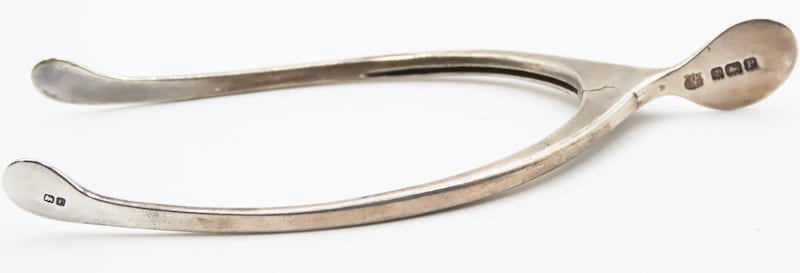
There are some silver items also for sale in the upcoming Hegarty’s Antiques online auction on October 30th at 11am, which might lure in collectors. These include a pair of George II silver cast candlesticks made in the 1750s by Isaac D’Olier, a Dublin-based silversmith with Huguenot heritage (€3,000-€4,000), and a pair of George II silver salt containers made around the same time by Dublin silversmith, William Townsend (€500-€600).
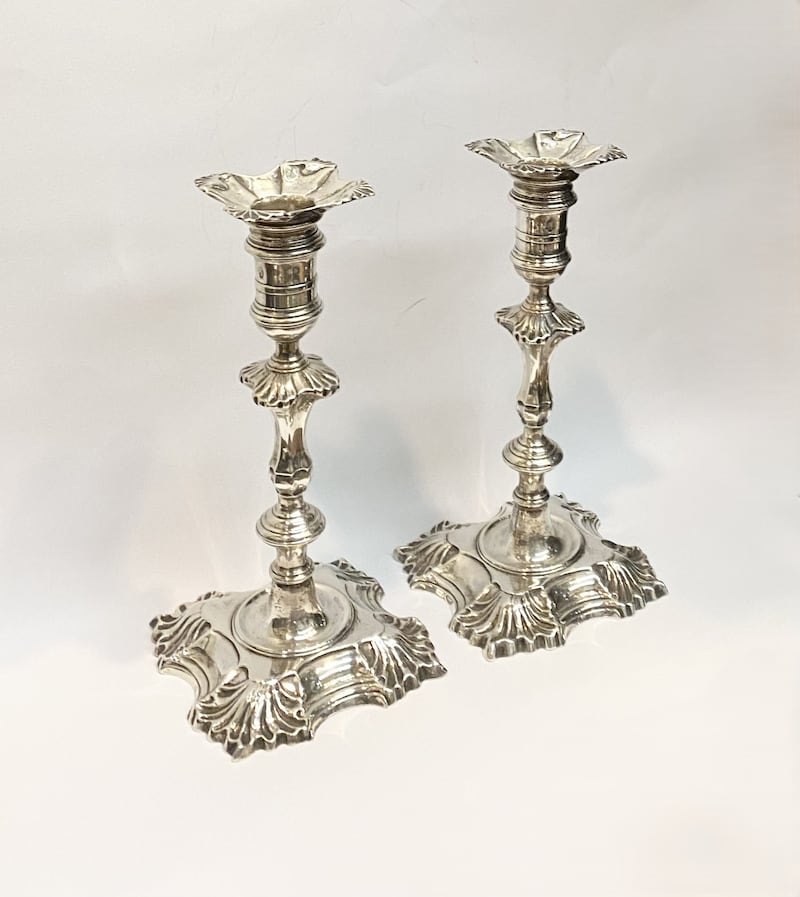
Jimmy Weldon of Weldon Jewellers on Clarendon Street, Dublin, is one of Ireland’s leading experts in silver. He says that as prices for silver are cheaper now than 20 years ago, it’s an opportune time for people to invest in top quality early Irish Georgian silver. “You’ve got to buy pieces with clear marks,” he says, referring to both the hallmarks and maker’s marks.
However, that might be easier said than done because, as Weldon points out, good quality old Irish silver rarely comes on the market as it is mainly held in public and private collections. In the meantime, those keen to familiarise themselves with the variety of antique silver, a trip to the National Museum of Ireland: Decorative Arts in Collins Barracks, Dublin, or the Irish Silver Museum in the Waterford Treasures complex would be worthwhile.
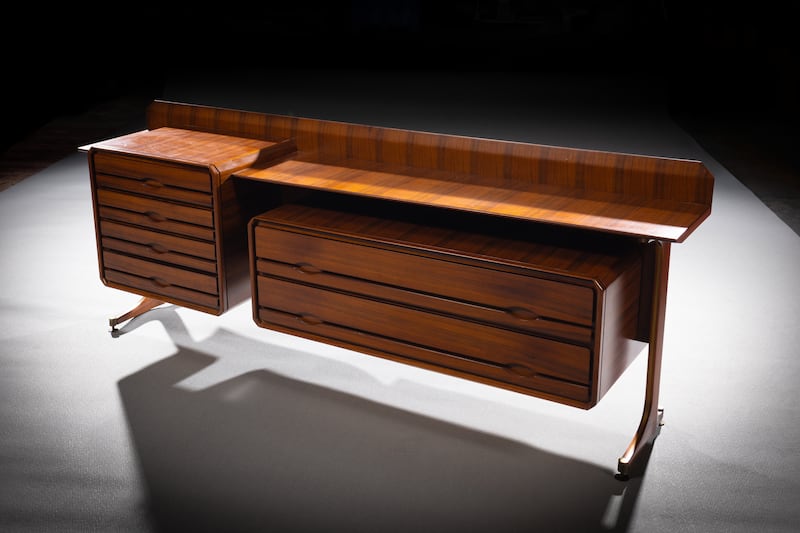
Modern appeal
Fans of mid-century modern furniture have another chance to seek out stunning chairs, stylish tables and sleek side boards made from rosewood or burr walnut at deVere’s Irish Art and Design online auction, which closes on Tuesday, November 5th at 2pm.
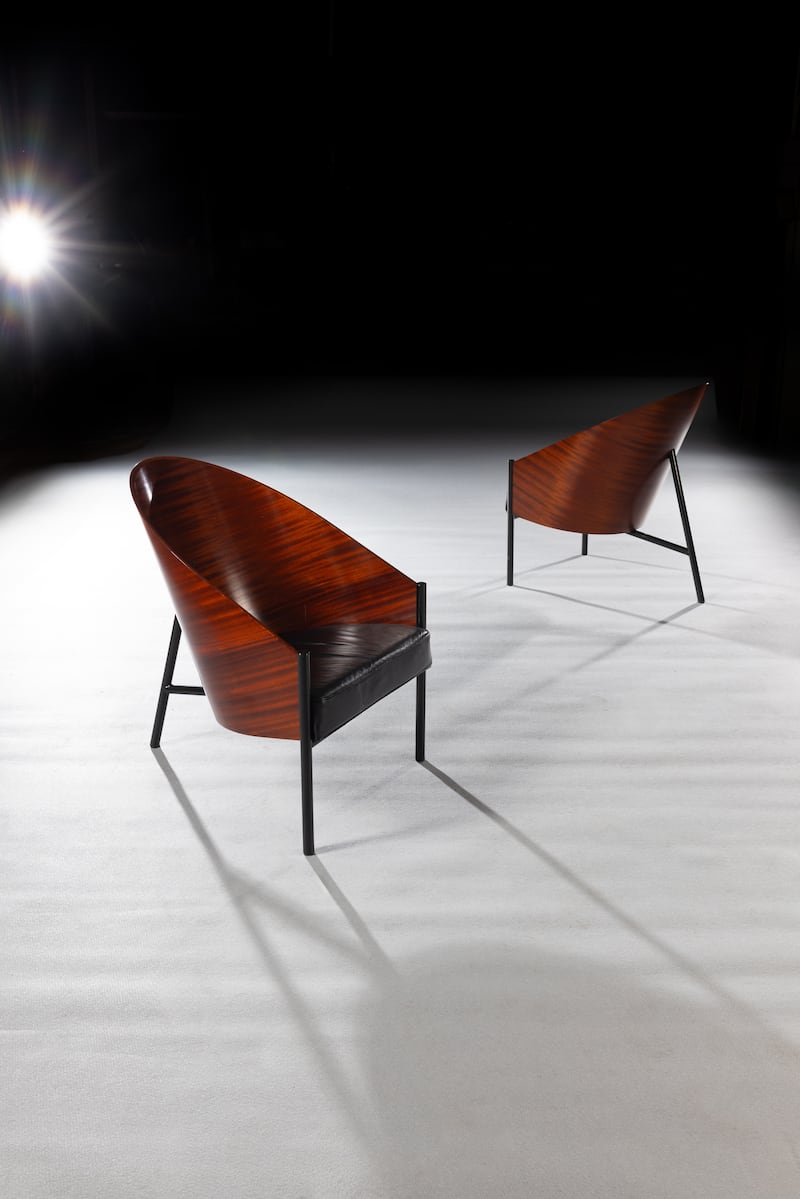
The range of furniture from the 1950s up to the 1980s, with its characteristic use of glass, chrome, gilt, funky leather and beautiful wood finishes will be on view in deVeres’ auction rooms, 35 Kildare Street, Dublin, and nearby Buswells Hotel on Molesworth Street, from Saturday, November 2nd until Tuesday, November 5th at lunchtime.
Some highlights include a pair of Pratfall easy chairs custom made in 1984 by the Parisian designer Phillip Starck for Café Costes, in the Les Halles district of Paris (€2,000-€3,000). At the time, Starck was little known but his futuristic designs for the cafe were so completely different from the traditional Parisian bistros that it drew crowds to the then less salubrious part of the city. The cafe’s owner, Jean-Louis Costes, went on to develop the Hotel Costes on the much more upmarket Parisian street, Rue Saint-Honoré.
Other interesting items include a circular tulip table by Finnish-US architect and designer, Eero Saarinen (€2,000-€3,000). The marble topped table stands on a heavy cast-iron splayed base. Also worth checking out is a 1960s Italian rosewood side cabinet with floating drawers and shelves (€1,500-€2,500).
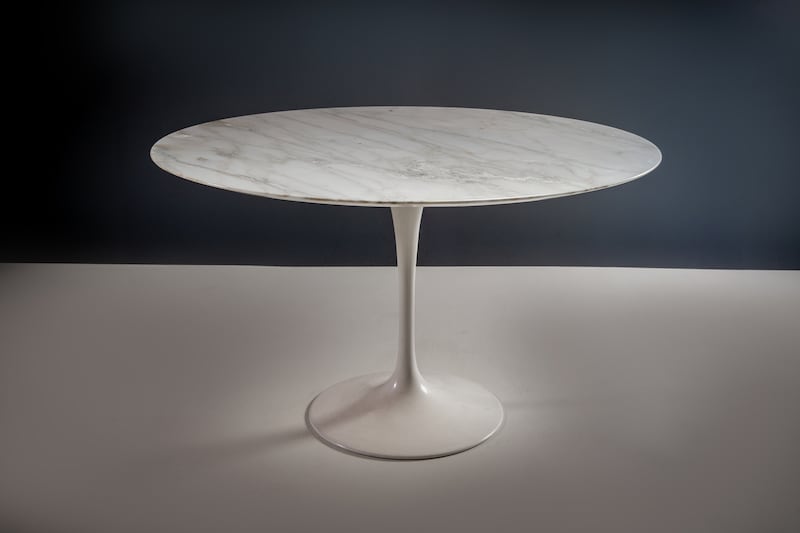
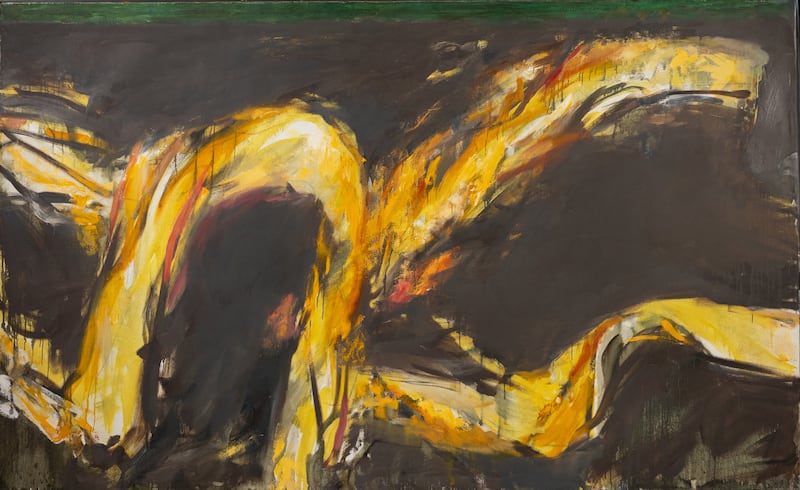
Among the many paintings for sale is Winter Knot by Barrie Cooke (€8,000-€12,000). Fans of the English-born artist, who lived in Ireland for much of his adult life, will recall his series of Knot paintings from an exhibition in the Hendricks Gallery in 1983.
Matthewsauctionrooms.com; hegartyantiques.com; deveres.ie
What did it sell for?

Rory Gallagher’s 1961 Fender Stratocaster Electric Guitar
Estimate €840,000-€1,200,000
Hammer price €837,000
Auction house Bonham’s
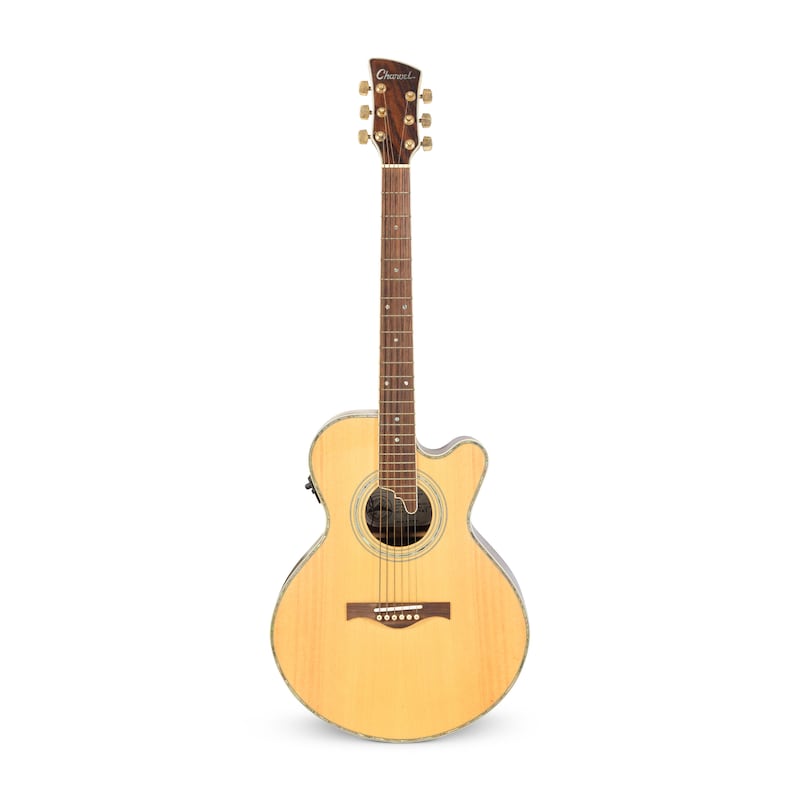
Rory Gallagher’s Charvel 625C guitar
Estimate €1,800-€2,400
Hammer price €8,376
Auction house Bonham’s
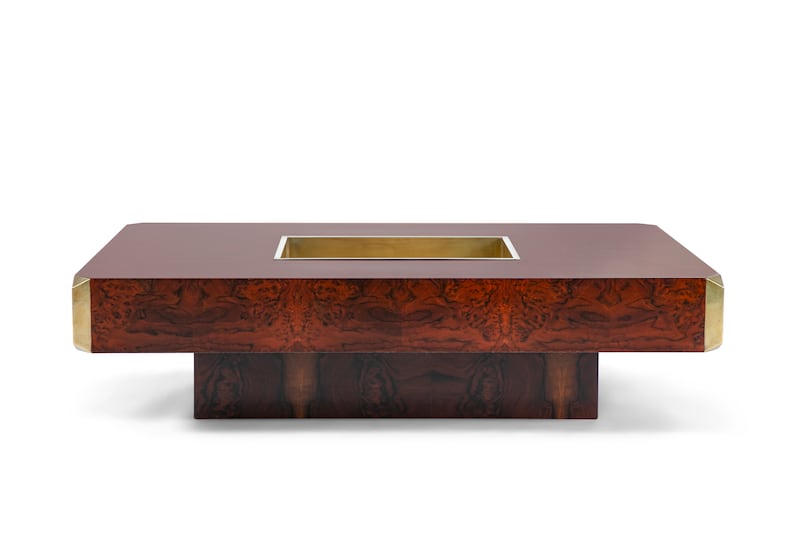
Burl wood coffee table by Willy Rizzo
Estimate €2,000-€3,000
Hammer price €3,200
Auction house Adam’s
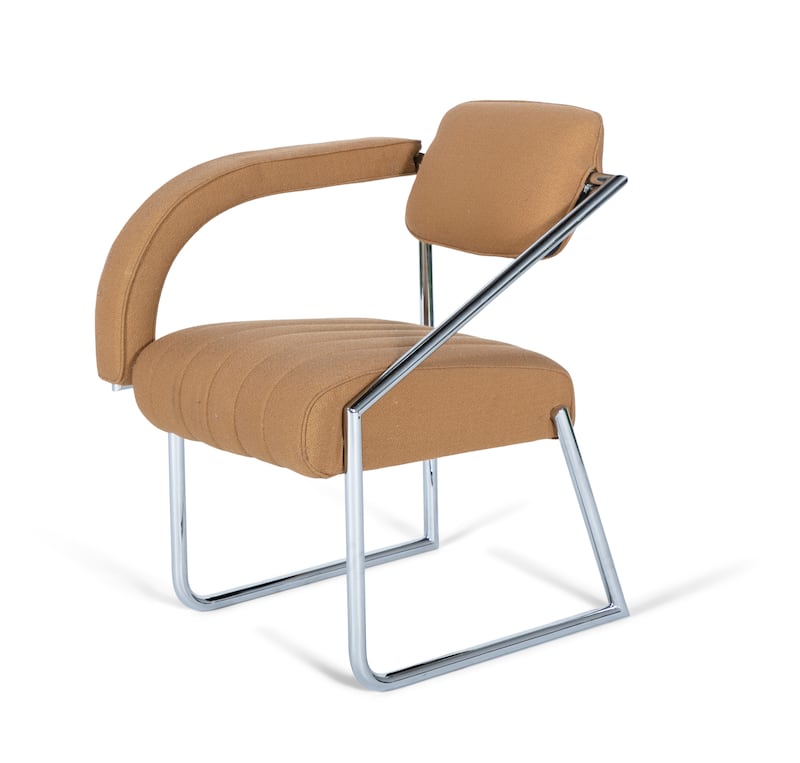
Non-Conformist chair, Eileen Gray
Estimate €2,000-€3,000
Hammer price €2,400
Auction house Adam’s
- Sign up for push alerts and have the best news, analysis and comment delivered directly to your phone
- Join The Irish Times on WhatsApp and stay up to date
- Listen to our Inside Politics podcast for the best political chat and analysis














